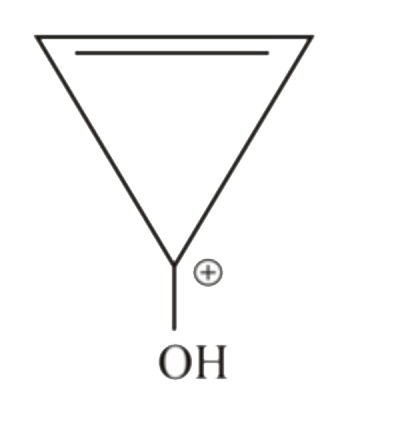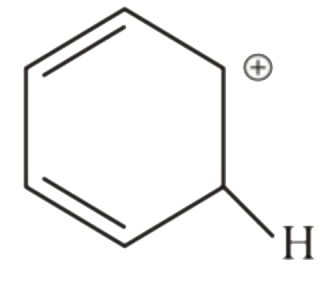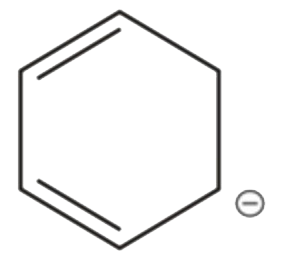Which one of the following ions is not iso-electronic with F−?
O2−
Na+
Ne
N−
To determine which ion is not isoelectronic with the fluoride ion (F⁻), we need to calculate the number of electrons in each of the given ions and compare them to the number of electrons in F⁻.
1. Determine the number of electrons in F⁻:
- Fluorine (F) has an atomic number of 9, which means it has 9 electrons in its neutral state.
- The F⁻ ion has gained 1 additional electron, so:
Number of electrons in F⁻=9+1=10
2. Determine the number of electrons in O²⁻:
- Oxygen (O) has an atomic number of 8, so it has 8 electrons in its neutral state.
- The O²⁻ ion has gained 2 electrons, so:
Number of electrons in O²⁻=8+2=10
3. Determine the number of electrons in Na⁺:
- Sodium (Na) has an atomic number of 11, so it has 11 electrons in its neutral state.
- The Na⁺ ion has lost 1 electron, so:
Number of electrons in Na⁺=11−1=10
4. Determine the number of electrons in Ne:
- Neon (Ne) has an atomic number of 10, so it has 10 electrons in its neutral state.
- Therefore, the number of electrons in Ne is:
Number of electrons in Ne=10
5. Determine the number of electrons in N⁻:
- Nitrogen (N) has an atomic number of 7, so it has 7 electrons in its neutral state.
- The N⁻ ion has gained 1 electron, so:
Number of electrons in N⁻=7+1=8
6. Comparison of the number of electrons:
- F⁻: 10 electrons
- O²⁻: 10 electrons
- Na⁺: 10 electrons
- Ne: 10 electrons
- N⁻: 8 electrons
7. Conclusion:
- The ions O²⁻, Na⁺, Ne, and F⁻ all have 10 electrons and are therefore isoelectronic with each other.
- The N⁻ ion has only 8 electrons and is not isoelectronic with F⁻.
- Thus, the ion that is not isoelectronic with F⁻ is N⁻.
Final Answer:
N⁻ is not isoelectronic with F⁻.
- Fluorine (F) has an atomic number of 9, which means it has 9 electrons in its neutral state.
- The F⁻ ion has gained 1 additional electron, so:
Number of electrons in F⁻=9+1=10
- Oxygen (O) has an atomic number of 8, so it has 8 electrons in its neutral state.
- The O²⁻ ion has gained 2 electrons, so:
Number of electrons in O²⁻=8+2=10
- Sodium (Na) has an atomic number of 11, so it has 11 electrons in its neutral state.
- The Na⁺ ion has lost 1 electron, so:
Number of electrons in Na⁺=11−1=10
- Neon (Ne) has an atomic number of 10, so it has 10 electrons in its neutral state.
- Therefore, the number of electrons in Ne is:
Number of electrons in Ne=10
- Nitrogen (N) has an atomic number of 7, so it has 7 electrons in its neutral state.
- The N⁻ ion has gained 1 electron, so:
Number of electrons in N⁻=7+1=8
- F⁻: 10 electrons
- O²⁻: 10 electrons
- Na⁺: 10 electrons
- Ne: 10 electrons
- N⁻: 8 electrons
- The ions O²⁻, Na⁺, Ne, and F⁻ all have 10 electrons and are therefore isoelectronic with each other.
- The N⁻ ion has only 8 electrons and is not isoelectronic with F⁻.
- Thus, the ion that is not isoelectronic with F⁻ is N⁻.
N⁻ is not isoelectronic with F⁻.
Topper's Solved these Questions
Similar Questions
Knowledge Check
Which one of the following ions is coloured ?
ASc3+BTi4+CZn2+DV2+Which one of the following ion is aromatic ?
A B
B C
C D
D
Which one of the following ions is colourless ?
ACu+BCo2+CNi2+DFe3+
Which of the following has iso group?
View SolutionWhich one of the following is coloured ion ?
View SolutionWhich of the following is iso-electronic with neon-
View SolutionWhich of the following is iso-electronic with neon?
View SolutionWhich of the following pair of species are iso-electronic ?
View Solution
